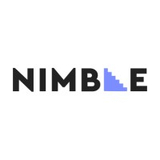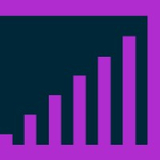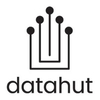Web Crawler


Web crawlers enable businesses to extract data from the web, converting the largest unstructured data source into structured data +Show More
| Products | Position | Unblocker | Solution type | Interactive scraper | |
|---|---|---|---|---|---|
|
|
Leader
|
✅
|
No-code & API
|
✅
|
|
|
Bright Data empowers AI and business intelligence teams with real-time, high-quality public web data. Trusted by Fortune 500 companies, leading AI labs, and fast-scaling startups, Bright Data provides the foundational infrastructure needed to fuel AI models, automate decision-making, and unlock insights at scale.
Why Bright Data Is the Go-To Infrastructure for AI & BI: Built for AI: Real-World Data at Scale AI models are only as good as the data they’re trained on. Bright Data offers access to massive volumes of structured, real-time, and historical web data — ideal for training large language models (LLMs), powering AI agents, and fine-tuning machine learning pipelines. From market research to competitive analysis, Bright Data delivers the data infrastructure BI teams need to make faster, smarter decisions. Access accurate, up-to-date data from millions of websites across industries like e-commerce, real estate, finance, and more. Bright Data offers a full stack of tools to collect, structure, and deliver web data — no scraping infrastructure required. Datasets: Pre-collected, ready-to-use datasets from sources like LinkedIn, Google Maps, Crunchbase, and Zillow — ideal for AI training and enrichment. Scraper APIs: Code-free and developer-friendly APIs to extract real-time data from any website. Web Unlocker: Bypass anti-bot systems and access even the most protected websites with ease. Proxy Infrastructure: The world’s largest and most reliable proxy network for custom data collection. Key Use Cases: AI Model Training: Feed LLMs and ML models with diverse, real-world data. AI Agents: Enable autonomous agents to interact with and learn from the live web. Data Enrichment: Enhance internal datasets with public web data for better predictions and insights. BI Dashboards: Power analytics tools with fresh, structured data from across the web. Market Intelligence: Monitor competitors, pricing, and trends in real time. Features: Why Leading AI & BI Teams Choose Bright Data . Access to 72M+ IPs and 1M+ websites . Developer-friendly APIs and SDKs . AI-ready datasets with minimal preprocessing . Enterprise-grade compliance (GDPR, CCPA) . 99.99% uptime and 24/7 support . Real-time and historical data options. Developed For: AI & ML Engineers Data Scientists BI Analysts Product & Innovation Teams Enterprises building AI-driven products Basis for EvaluationWe made these evaluations based on the following parameters; Customer satisfaction
Average rating
Market presence
Company's number of employees
1k-2k employees
Company's social media followers
30k-40k followers
Features
Unblocker
✅
Solution type
No-code & API
Proxy support
✅
JavaScript rendering
✅
Interactive scraper
✅
Company
Type of company
private
Founding year
1901
Price
Growth
15400 Requests for $499 / Month
|
|||||
|
|
Leader
|
✅
|
API
|
❌
|
|
|
Provides:
More than 177M IPs in 195 countries worldwide, including residential, mobile, datacenter, ISP, and SOCKS5 proxy servers. Large-scale scraping of public web data without being detected and blocked by the target websites. Web Unblocker to collect data at scale from JavaScript-heavy websites API-based web scrapers Web datasets for teams that want to get fresh, structured web data without building a web scraping and parsing infrastructure Basis for EvaluationWe made these evaluations based on the following parameters; Customer satisfaction
Average rating
Market presence
Company's number of employees
300-400 employees
Company's social media followers
20k-30k followers
Features
Unblocker
✅
Solution type
API
Interactive scraper
❌
Company
Type of company
private
Founding year
2015
Price
Micro
10 Requests for $49 / Month
|
|||||
|
|
Leader
|
✅
|
API
|
❌
|
|
|
Provides proxies and scrapers for web data collection. 40M+ ethically sourced residential and datacenter proxies in 195+ countries, including states and cities worldwide, to avoid geo and IP blocks while scraping. Decodo's proxy network includes residential, ISP (static residential), mobile, datacenter and dedicated datacenter proxies. Proxies support HTTP and SOCKS5 protocols. Offers Site Unblocker that allows users to automate proxy selection and render JavaScript web pages. Scrapers retrieve data from any website without writing a single line of code. Schedules the scraping task and receives the results via email or webhook. Provides pre-made scraping templates.
Basis for EvaluationWe made these evaluations based on the following parameters; Customer satisfaction
Average rating
Market presence
Company's number of employees
100-200 employees
Company's social media followers
1k-2k followers
Features
Unblocker
✅
Solution type
API
Proxy support
✅
JavaScript rendering
✅
Interactive scraper
❌
Company
Type of company
private
Founding year
2018
Price
25K requests
25000 Requests for $50 / Month
|
|||||
|
|
Leader
|
✅
|
No-code & API
|
❌
|
|
|
Apify is a platform for web scraping and automation, enabling users to extract data from websites, process it, and automate their workflows. It provides scrapers and proxies to support data collection projects.
Basis for EvaluationWe made these evaluations based on the following parameters; Customer satisfaction
Average rating
Market presence
Company's number of employees
100-200 employees
Company's social media followers
5k-10k followers
Total funding
$1-5m
# of funding rounds
4
Latest funding date
June 19, 2019
Last funding amount
$1-5m
Features
Unblocker
✅
Solution type
No-code & API
Proxy support
✅
JavaScript rendering
✅
Interactive scraper
❌
Company
Type of company
private
Founding year
2015
Price
Starter
32 GB for $49 / Month
|
|||||
|
|
Leader
|
✅
|
API
|
❌
|
|
|
NetNut is a proxy service providers that offers proxies for individuals and businesses, including residential (rotating & static), datacenter and mobile proxy servers. The proxy provider also offers Website Unblocker technology. NetNut provides customers with proxy services that are customised to their specific applications.
Basis for EvaluationWe made these evaluations based on the following parameters; Customer satisfaction
Average rating
Market presence
Company's number of employees
50-100 employees
Company's social media followers
5k-10k followers
Features
Unblocker
✅
Solution type
API
Interactive scraper
❌
Company
Type of company
private
Founding year
2017
Price
Production
1000000 Requests for $1080 / Month
|
|||||
|
|
Challenger
|
-
|
API
|
❌
|
|
|
Offers cloud-based LinkedIn profile scraper and a company scraper to help users scrape public data from the platform.
Basis for EvaluationWe made these evaluations based on the following parameters; Customer satisfaction
Average rating
Market presence
Company's number of employees
5-10 employees
Company's social media followers
100-200 followers
Total funding
$1-1m
# of funding rounds
2
Latest funding date
May 1, 2019
Last funding amount
$1-1m
Features
Solution type
API
Interactive scraper
❌
Company
Type of company
private
Founding year
2016
Price
Starter
10000 Requests for $56 / Month
|
|||||
|
|
Challenger
|
-
|
No-code
|
❌
|
|
|
Free Web Scraping Tool & Free Web Crawlers for Data Extraction without coding. Cloud-Based Web Crawling/Data As A Service.
Basis for EvaluationWe made these evaluations based on the following parameters; Customer satisfaction
Average rating
Market presence
Company's number of employees
20-30 employees
Company's social media followers
1k-2k followers
Features
Solution type
No-code
Interactive scraper
❌
Company
Type of company
private
Founding year
2016
Price
Standard Plan
100 Requests for $99 / Month
|
|||||
|
|
Challenger
|
-
|
API
|
❌
|
|
|
Diffbot provides a suite of products built to turn unstructured data from across the web into structured, contextual databases. Diffbot's products are built off of cutting-edge machine vision and natural language processing software that's able to read billions of documents every day. Diffbot Knowledge Graph Diffbot's Knowledge Graph product is the world's largest contextual database comprised of over 10 billion entities including organizations, products, articles, events, and more. Knowledge Graph's innovative NLP and fact parsing technologies link up entities into contextual databases, incorporating over 1 trillion "facts" from across the web in nearly live time.
Basis for EvaluationWe made these evaluations based on the following parameters; Customer satisfaction
Average rating
Market presence
Number of case studies
5-10 case studies
Company's number of employees
30-40 employees
Company's social media followers
10k-20k followers
Total funding
$10-50m
# of funding rounds
3
Latest funding date
February 11, 2016
Last funding amount
$10-50m
Features
Solution type
API
Interactive scraper
❌
Company
Type of company
private
Founding year
2012
Price
Startup
250.000 Requests for $299 / Month
|
|||||
|
|
Niche Player
|
-
|
-
|
-
|
|
|
Datahut is a web scraping service provider providing web scraping, data scraping, web crawling and web data extraction to help companies get structured data
Basis for EvaluationWe made these evaluations based on the following parameters; Customer satisfaction
Average rating
Market presence
Company's number of employees
20-30 employees
Company's social media followers
2k-3k followers
Company
Type of company
private
Founding year
2015
|
|||||
|
|
Niche Player
|
-
|
API
|
❌
|
|
|
Offers proxy networks, API for data collection activities, and web data extraction services for businesses.
Basis for EvaluationWe made these evaluations based on the following parameters; Customer satisfaction
Average rating
Market presence
Company's number of employees
200-300 employees
Company's social media followers
40k-50k followers
Features
Solution type
API
Interactive scraper
❌
Price
Starter
1000 Requests for $100 / Month
|
|||||
“-”: AIMultiple team has not yet verified that vendor provides the specified feature. AIMultiple team focuses on feature verification for top 10 vendors.
Sources
AIMultiple uses these data sources for ranking solutions and awarding badges in web crawlers:
Web crawling Leaders
According to the weighted combination of 4 metrics





What are web crawling
customer satisfaction leaders?
Taking into account the latest metrics outlined below, these are the current web crawling customer satisfaction leaders:





Which web crawling solution provides the most customer satisfaction?
AIMultiple uses product and service reviews from multiple review platforms in determining customer satisfaction.
While deciding a product's level of customer satisfaction, AIMultiple takes into account its number of reviews, how reviewers rate it and the recency of reviews.
- Number of reviews is important because it is easier to get a small number of high ratings than a high number of them.
- Recency is important as products are always evolving.
- Reviews older than 5 years are not taken into consideration
- older than 12 months have reduced impact in average ratings in line with their date of publishing.
What are web crawling
market leaders?
Taking into account the latest metrics outlined below, these are the current web crawling market leaders:





Which one has collected the most reviews?
AIMultiple uses multiple datapoints in identifying market leaders:
- Product line revenue (when available)
- Number of reviews
- Number of case studies
- Number and experience of employees
- Social media presence and engagement
What are web crawling feature leaders?
Taking into account the latest metrics outlined below, these are the current rpa software feature leaders.





Which one offers the most features?
Bright Data Proxies & Scrapers, Smartproxy Proxies & Scrapers, Nimble offer the most feature complete products.
What are the most mature web crawlers?
Which one has the most employees?





Which web crawling companies have the most employees?
92 employees work for a typical company in this solution category which is 69 more than the number of employees for a typical company in the average solution category.
In most cases, companies need at least 10 employees to serve other businesses with a proven tech product or service. 14 companies with >10 employees are offering web crawlers. Top 3 products are developed by companies with a total of 1k employees. The largest company in this domain is Bright Data with more than 1000 employees. Bright Data provides the web crawling solution: Bright Data Proxies & Scrapers
Insights
What are the most common words describing web crawlers?
This data is collected from customer reviews for all web crawling companies. The most positive word describing web crawlers is “Easy to use” that is used in 5% of the reviews. The most negative one is “Expensive” with which is used in 2% of all the web crawling reviews.
What is the average customer size?
According to customer reviews, most common company size for web crawling customers is 1-50 Employees. Customers with 1-50 Employees make up 71% of web crawling customers. For an average Proxies & scrapers solution, customers with 1-50 Employees make up 35% of total customers.
Customer Evaluation
These scores are the average scores collected from customer reviews for all web crawlers. Web Crawlers are most positively evaluated in terms of "Overall" but falls behind in "Likelihood to Recommend".
Where are web crawling vendors' HQs located?
Trends
What is the level of interest in web crawlers?
This category was searched on average for 86.6k times per month on search engines in 2024. This number has decreased to 0 in 2025. If we compare with other proxies & scrapers solutions, a typical solution was searched 30.5k times in 2024 and this decreased to 0 in 2025.
Learn more about Web Crawlers
Web crawlers extract data from websites. Websites are designed for human interaction so they include a mix of structured data like tables, semi-structured data like lists and unstructured data like text. Web crawlers analyze the patterns in websites to extract and transform all these different types of data.
Crawlers are useful when data is spread over multiple pages which makes it difficult for a human to copy the data
First, user needs to communicate the relevant content to the crawler. For the technically savvy, this can be done by programming a crawler. For those with less technical skills, there are tens of web crawlers with GUIs (Graphical User Interface) which let users select the relevant data
Then, user starts the crawler using a bot management module. Crawling tends to take time (e.g. 10-20 pages per minute in the starter packages of most crawlers). This is because the web crawler visits the pages to be crawled like a regular browser and copies the relevant information.
If you tried doing this manually, you would quickly get visual tests to verify that you are human. This test is called a CAPTCHA "Completely Automated Public Turing test to tell Computers and Humans Apart". Websites have variety of methods like CAPTCHA to stop such automated behavior. Web crawlers rely on methods like changing their IP adresses and digital fingerprints to make their automated behavior less noticeable
Web crawling is a true Swiss army knife like Excel, therefore we will stick to the most obvious use cases here:
- Competitive analysis: Knowing your competitor's campaigns, product launches, price changes, new customers etc. can be invaluable in competitive markets. Crawlers can be set to produce alarms and reports to inform your sales, marketing and strategy teams. For example, Amazon sellers set up price monitoring bots to ensure that their products remain in the correct relative position compared to the competition. Things can take an unexpected turn when two companies automatically update their prices based on one another's price changes. Such automated pricing bots led a book to reach a $23m sales price.
- Track customers: While competition rarely kills companies, failing to understand changing customer demands can be far more damaging. Crawling customers' websites can help better understand their business and identify opportunities to serve them.
- Extract leads: Emails and contact information of potential customers can be crawled for building a lead funnel. For example, info@[domain].com email addresses get hundreds of sales pitches as these get added into companies' lead funnels
- Enable data-driven decision making: Even today, most business decisions rely on a subset of the available relevant data. Leveraging the world's largest database, internet, for data-driven decision making makes sense especially for important decisions where cost of crawling would be insignificant.
Web crawlers are most commonly used by search engines to index web content. Here are some of the main applications of web crawlers:
- Data mining
- Web archiving
- Website testing
- Web scraping
- SEO Monitoring
A web crawler systematically browses and indexes the web, while a web scraper is used to extract specific data from websites for individual use and analysis.
The legality of web crawling depends on various factors, including the country in which it is conducted, the specific website being crawled, and the actions of the crawler. Websites often contain specific instructions for web crawlers in their "robots.txt" file or their terms of service. Adhering to these instructions is important when performing ethical web crawling activities.
For the United States, these are high level guidelines:
- It can be illegal to login to scrape data as outlined in hiQ Labs v. LinkedIn
- It is legal to scrape public data if the scraper is not a user of the platform to be scraped. Example case: Meta Platforms v. Bright Data
Unless severe restrictions are placed crawling, crawling will remain an important tool in the corporate toolbox. Leading web crawling companies claim to work with Fortune 500 companies like PwC and P&G. BusinessInsider claims in a paywalled article that hedgefunds spend billions on crawling.
This does not constitute legal advice.
The concept of a "politeness policy" in the context of web crawling refers to a set of guidelines aimed at preventing web crawlers from overloading websites with excessive requests. A politeness policy may include rules such as crawling frequency, respect for robots.txt, or content scraping restrictions. It is important to adhere to the politeness policy set by website owners regarding the scraping.










